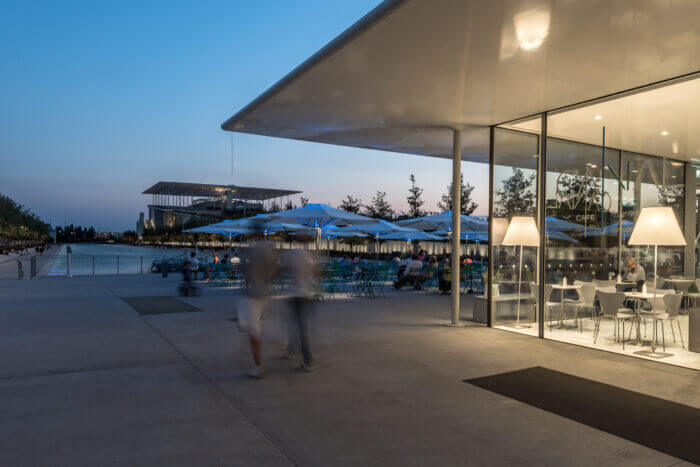Fertile, beautiful, with hidden secrets as well as obvious elements that make this island unique. And indeed the culture, the entertainment, the economy, the people and many more, create an island that is self-sufficient and unique among the Cyclades. Naxos island, situated between the Little Cyclades, Paros and Mykonos, is able to become the core of tourism and demonstrate at the same time unique examples of growth.
Naxos’ name is connected to the mythological narrations, the pirates’ raids and wars, but it always finds a common keystone in the course of history: Creativity. Lost in the narrow alleys of Chora, at the endless beaches, at the mountain villages that are filled with life, I clearly realise the inexhaustible talent, the will for work and the multitalented aspect of the locals.
An oddly fertile island compared to its neighbouring islands, Naxos was chosen to become the homeland of Dionysus. Obviously, not by accident. Since the ancient times to date, the island produces top quality citrus fruits, delicious potatoes, while a fantastic wine comes from its vineyards.
The fertile island of the Cyclades
A characteristic of Naxos is its unusually fertile soil for an island of the Cyclades. Thus, according to tradition, the island was gifted and blessed by god Dionysus. Since the ancient times and still today, the island produces citrus fruits of exceptional quality and Naxos’ vineyards produce an exquisite wine. Farming is very developed, making the island famous for its cheese variety. An aged gruyere, as well as a Naxos Arseniko cheese will upgrade a lot of gourmet meals.
Spend time, walk through the coastal and mountain villages and discover the original aspect of the island. Don’t try to find common points with the other islands of the Cyclades. Live it exactly as it unfolds in front of you. And you’ll be rewarded! Visit the archaeological sites, the outstanding monuments, the fertile valleys at Egares and Melanes. Go up the famous mountain of Naxos, Za, visit the eastern part of the island. Make a stop at the picturesque little cove of Moutsouna, walk along the history through the abandoned warehouses and installations of emery, a rock that once gave life to this part of the island. Visit the workshop of famous German sculptor Ingbert Brunk, who permanently lives in the remoted Azala and has devoted his art to the Naxian marble.
Portara
If you have arrived by boat, then you have definitely seen it. It’s the symbol of the island, the monument that has undertaken the role of welcoming the visitors. The impressive Portara was the entrance to the temple of Apollo, that Lygdamis, the tyrant of Naxos had begun to construct during the 6th century BC. The temple was never completed. However, the symbolic character that Portara obtained for the island is great. This particular spot was also associated with the tragic story of Ariadne, who according to the myth, was abandoned by Theseus and Dionysus met her at that place and made her his wife. According to another version of the myth, Ariadne jumped from this spot into the sea and was drowned.
Byzantine monuments
Naxos doesn’t simply host some Byzantine monuments. Naxos is the island that is characterised by the most Byzantine island environment in the Aegean Sea. This wealth has been discovered and restored in various areas and it’s most apparent at Drymalia. Byzantine towers, churches, Byzantine built-in limbs scattered in buildings and fields, create a sense of living historic route. Indeed, Naxos is an open museum and needs time and will to explore it.
Filoti Settlement

Kastro (The Castle)

Apiranthos
One of the most beautiful and popular villages of Naxos is Apiranthos or T’ Aperathou, as locals use to call it. It is situated at an altitude of 650 metres and stands out due to its traditional architecture. Two towers of the 17th century were the elements around which the settlement was developed. Almost the entire settlement maintains its Venetian character with the narrow alleys, the marble cobblestone paths and the arches. The Tower of Zevgolis, built during the 17th century, is situated at the entrance of the village, onto a rock and is one of the hot spots of the entire village. Aghia Kyriaki, a church that dates back to the period of Iconoclasm of the 9th century, is one of the most important monuments and is included among the most important monuments of Greece. Another element that will surprise you at the village, is the linguistic idiom of the locals.
Smyrida (Emery)
A big chapter in the history of the island, is Smyrida with the mines declared preservable by the Ministry of Culture as important monuments of the modern industrial history of Greece. Close to Apiranthos and also to Koronos, you will come across the deposits of a mineral that was known since the ancient times. A tour in the area today will bring you close to that part of history and at the haven of Apiranthos, Moutsouna, you will see the remains of some huge warehouses and the two typical cranes at the jetty, that were used to carry the material aboard the ships. Moreover, all along the journey, you will have the chance to see parts of the aerial railway, that was used to carry the ores from the mines to Moutsouna. This railway network was constructed from 1926 to 1929 and consists of 72 wagons, loading installations, engine rooms, material warehouses, etc. This aerial railway operated until 1978 and it is one of the very few that can be found in Greece.






